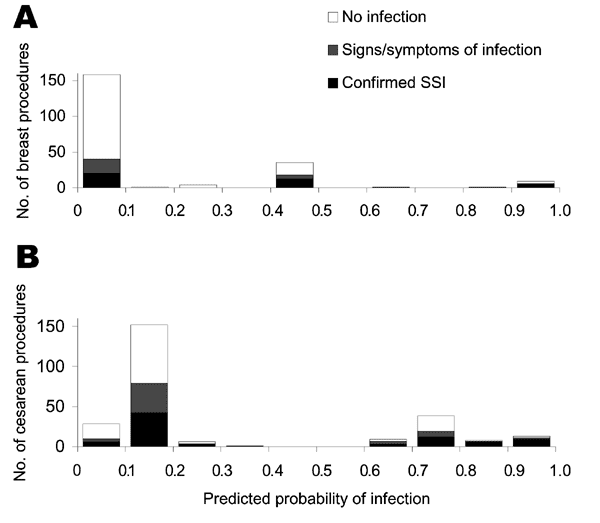 |
| |
||
| |
|||||||||||||||||
|
|||||||||||||||||
|
|||||||||||||||||
| EID
Home | Ahead of Print | Past
Issues | EID Search | Contact
Us | Announcements | Suggested
Citation | Submit Manuscript
Volume 10, Number 11, November 2004 Enhanced Identification of Postoperative Infections among OutpatientsAndrew L. Miner,* Kenneth E. Sands,*§ Deborah S. Yokoe,* John
Freedman,# Kristin Thompson, James M. Livingston, and Richard Platt* |
||
|
|
 |
|
| Back to article | |
|
Figure 1. Infectious outcomes by predicted probability of surgical site infections (SSI) calculated from SSI indicators for A) breast procedures and B) cesarean sections. Shown are all procedures with adequate documentation, which excludes 80%90% of procedures with no SSI indicator and predicted probability of infection at baseline, 0.006. Predicted probability of infection is based on the categories of SSI indicators found in claims and pharmacy records. The infectious outcomes for breast procedures are based on postoperative days 060; cesarean section outcomes are from days 0–30. |
|
|
|
|
|
EID Home | Top of Page | Ahead-of-Print | Past Issues | Suggested Citation | EID Search | Contact Us | Accessibility | Privacy Policy Notice | CDC Home | CDC Search | Health Topics A-Z |
|
|
This page last reviewed October 18, 2004 |
|
|
Emerging
Infectious Diseases Journal |
|